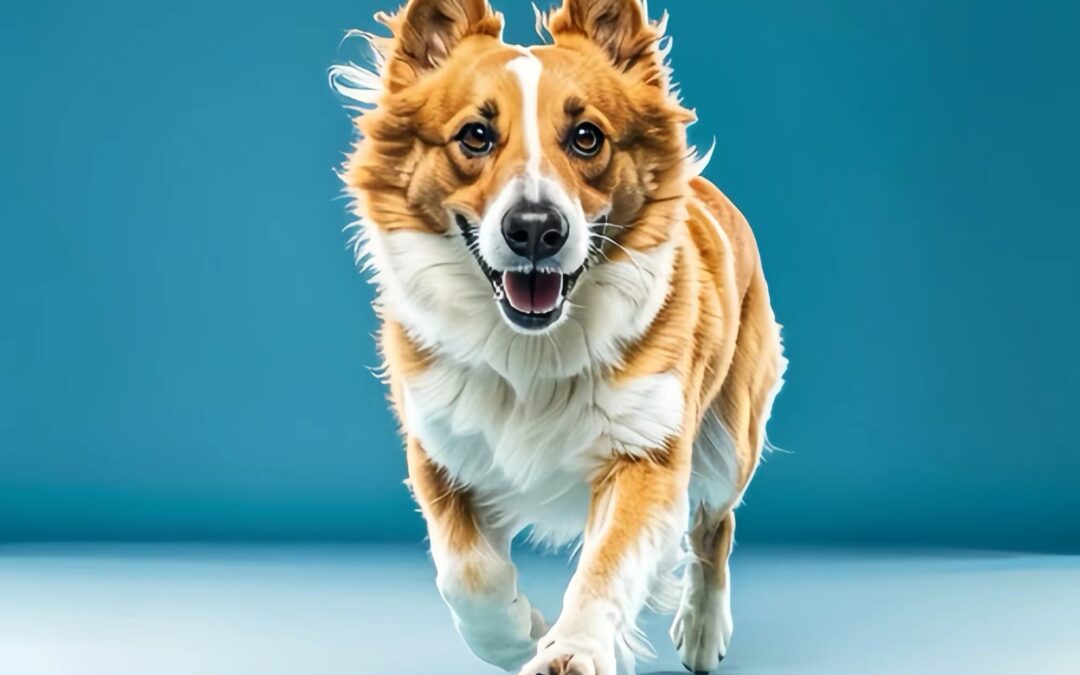
執筆者 TCMVET | 2024年6月18日 | 犬の癌と腫瘍
犬の良性肝腫瘍は、がんではありませんが、適切に特定および管理されなければ、重大な健康問題を引き起こす可能性があります。症状を早期に認識し、診断と治療の適切な手順を理解することで、犬の生活の質を大幅に向上させることができます。この記事では、良性肝腫瘍を患った犬の症状、診断、治療について詳しく取り上げ、愛犬の健康を確保するための重要な情報を提供します。
良性肝腫瘍とは何ですか?
犬の良性肝腫瘍は、肝臓に発生する非癌性の腫瘍です。悪性腫瘍とは異なり、体の他の部分に広がることはありませんが、肝機能や全体的な健康に影響を及ぼす可能性があります。良性肝腫瘍の一般的なタイプには、肝細胞腺腫、胆管腺腫、結節性過形成などがあります。
症状を認識する
良性肝腫瘍の症状を早期に特定することは、徐々に進行し、簡単に見落とされてしまうことが多いため、困難な場合があります。注意すべき主な症状は次のとおりです。
1. 腹部膨満
最も顕著な兆候の 1 つは、腫瘍の成長またはそれに伴う体液の蓄積によって生じる可能性のある、腹部の腫れまたは膨張です。
2. Loss of Appetite
良性の肝臓腫瘍を患っている犬は、食事への興味が低下し、体重減少や栄養失調につながる可能性があります。
3. 無気力と衰弱
肝臓はエネルギーの生成と全体的な活力に重要な役割を果たしているため、全般的な無気力感や脱力感を感じることはよくあります。
4. 嘔吐と下痢
肝臓の機能低下により、嘔吐や下痢などの消化器系の問題が発生する可能性があります。
5. 黄疸
黄疸は、目、歯茎、皮膚が黄色くなる症状で、肝機能障害の兆候である可能性があり、すぐに対処する必要がある重大な症状です。
6. 喉の渇きと排尿の増加
喉の渇きや排尿パターンの変化(排尿頻度の増加を含む)は、肝臓の問題の兆候である可能性があります。
良性肝腫瘍の診断
上記の症状に気付いた場合は、適切な診断のために獣医の診察を受けることが重要です。通常、必要な手順は次のとおりです。
1. 身体検査
獣医師は徹底的な身体検査を行い、腹部を触診して異常がないか調べます。
2. 血液検査
血液検査により肝酵素レベルが明らかになり、肝機能と腫瘍の存在の可能性が示されます。
3. イメージング技術
超音波、X 線、CT スキャンなどの画像診断技術により肝臓の詳細な画像が得られ、腫瘍の大きさ、位置、性質を特定するのに役立ちます。
4. 生検
場合によっては、腫瘍の良性を確認するために生検が必要になることがあります。生検では、小さな組織サンプルを採取して検査室で分析します。
ケアと管理
犬の良性肝腫瘍と診断された場合、その治療と管理はモニタリングと支持療法に重点が置かれます。
1. 定期的な獣医の診察
腫瘍の成長と肝機能を監視するには、頻繁な検査が不可欠です。獣医師は犬の特定の状態に基づいてスケジュールを調整します。
2. バランスの取れた食事
肝臓の健康をサポートするバランスの取れた食事は非常に重要です。抗酸化物質、ビタミン、ミネラルが豊富な食品は、肝臓の機能と全体的な健康を維持するのに役立ちます。獣医師が最適な食事の選択肢を推奨します。
3. 医薬品
良性腫瘍は積極的な治療を必要としないかもしれませんが、吐き気、痛み、炎症などの症状を管理するために薬が処方されることがあります。
4. 手術
腫瘍が著しく成長したり、重篤な症状を引き起こしたりする場合は、外科的切除が検討されることがあります。この決定は、腫瘍の大きさ、場所、犬の全体的な健康状態によって異なります。
5. 総合的なアプローチ
ハーブサプリメント、鍼治療、肝臓をサポートする療法などの総合的なアプローチを取り入れることで、従来の治療法を補完し、犬の生活の質を向上させることができます。
予防措置
良性の肝腫瘍を常に予防できるとは限りませんが、犬の全体的な健康を維持することでリスクを軽減できます。
- 定期的な運動: 犬を活動的に保つことは、全体的な健康と幸福をサポートします。
- ヘルシー・ダイエット: 高品質の食材を使ったバランスの取れた食事は肝臓の健康を促進します。
- 定期的な獣医の診察定期的な獣医の診察により、潜在的な健康上の問題を早期に発見し、管理することができます。
結論
犬の良性肝腫瘍は、がんではありませんが、犬の健康と快適さを確保するには、注意深い監視と管理が必要です。症状を早期に認識し、獣医の治療を受けることで、あなたの愛犬に最善のサポートを提供できます。定期的な検査、バランスの取れた食事、支持療法は、この病気を効果的に管理する上で大きな違いをもたらします。覚えておいてください、あなたの獣医は犬の健康と幸福を確保する最良の味方です。

執筆者 TCMVET | 2024年6月18日 | 食と健康
犬も人間と同様、不快感やストレスを引き起こすさまざまな皮膚疾患に悩まされることがあります。アレルギーから感染症まで、皮膚の問題は犬の生活の質に大きく影響します。専門的な獣医によるケアは不可欠ですが、医師のアドバイスを補い、症状を和らげる効果的な家庭療法がいくつかあります。この記事では、犬の皮膚疾患を治療するための革新的で自然な家庭療法について紹介し、愛犬が快適で健康な状態を保てるようにお手伝いします。
一般的な犬の皮膚疾患を理解する
治療を始める前に、犬によく見られる皮膚の問題を特定することが重要です。
- アレルギー: 環境要因、食物、ノミ刺されなどがアレルギー反応を引き起こし、かゆみ、赤み、炎症を引き起こすことがあります。
- ホットスポット急性湿潤性皮膚炎、またはホットスポットは、過度の舐めや掻き傷によって引き起こされる、皮膚の赤く湿った痛みを伴う部分です。
- 真菌および細菌感染症これらの感染症により、皮膚の剥がれ、脱毛、傷が生じる可能性があります。
- 寄生虫ノミ、ダニ、ダニは犬の皮膚疾患の一般的な原因です。
- 乾燥肌: 多くの場合、環境要因、不健康な食生活、または基礎的な健康状態によって引き起こされます。
犬の皮膚病に対する革新的な家庭療法
1. オートミール風呂
オートミールは鎮静作用があることで知られており、かゆみや炎症を起こした皮膚を緩和します。オートミール風呂の作り方は次のとおりです。
- プレーンな無味のオートミールを細かい粉末になるまで挽きます。
- オートミールパウダーを温水と混ぜてペースト状にします。
- ペーストを患部に塗るか、犬のお風呂のお湯に加えてください。
- 犬を10〜15分間浸した後、よくすすいでください。
2. ココナッツオイル
ココナッツオイルには抗菌性、抗真菌性、保湿性があり、さまざまな肌の問題に優れた治療薬となります。
- 少量のココナッツオイルを患部に直接塗ります。
- 肌に優しくマッサージして吸収させます。
- 肌の状態が改善するまで毎日ご使用ください。
3. アップルサイダービネガー
アップルサイダービネガーは細菌や真菌による感染症に効果があり、皮膚のかゆみを和らげます。
- スプレーボトルにリンゴ酢と水を同量混ぜます。
- 開いた傷口を避けて、患部に溶液をスプレーします。
- この治療法を1日1~2回使用してください。
4. アロエベラ
アロエベラは治癒力と鎮静力があるとして有名です。
- 純粋なアロエベラジェルを使用するか、植物から直接抽出してください。
- 炎症を起こした部分や感染した部分にジェルを塗ります。
- 1日に2〜3回繰り返し塗布してください。
5. ハーブティーリンス
カモミールや緑茶などのハーブティーには抗炎症作用と鎮静作用があります。
- 濃いカモミールティーか緑茶を淹れて冷まします。
- 犬をお風呂に入れた後、患部に優しく注ぎながら、このお茶をすすぎ洗いとして使用します。
- お茶を数分間置いてから洗い流してください。
6. オメガ3脂肪酸
犬の食事にオメガ 3 脂肪酸を加えると、皮膚の健康が改善され、炎症が軽減されます。
- 魚油カプセルなどのサプリメントを与えたり、サーモンなどの魚を食事に取り入れたりしましょう。
- 適切な投与量の推奨については獣医師にご相談ください。
予防措置
家庭療法に加えて、予防策を講じることで犬の皮膚の健康を維持することができます。
- Regular Grooming: 定期的に犬のブラッシングをして、抜け毛、汚れ、寄生虫を取り除いてください。
- バランスの取れた食事: 犬に必須栄養素が豊富なバランスの取れた食事を与えるようにしてください。
- 水分補給: 皮膚の潤いを保つために、犬に十分な水分補給をさせてください。
- クリーンな環境アレルゲンや寄生虫を減らすために、犬の寝具、おもちゃ、生活エリアを定期的に掃除してください。
獣医の診察を受けるべきとき
家庭療法は効果的ですが、以下の場合には獣医の診察を受けることが不可欠です。
- 皮膚の状態が悪化したり、家庭での治療では改善しない。
- 犬が、過度に引っかいたり噛んだりするなど、ひどい不快感の兆候を示しています。
- 開いた傷、出血、または感染の兆候があります。
結論
犬の皮膚病を自宅で自然療法で治療することは、効果的で、愛犬を癒すこともできます。オートミール、ココナッツ オイル、アップル サイダー ビネガー、アロエ ベラ、ハーブティーなどの材料を使用することで、症状を和らげ、愛犬の皮膚の健康を保つことができます。予防策を講じ、症状が長引いたり重度の場合は獣医に相談することを忘れないでください。適切なケアを行えば、愛犬は健康でかゆみのない生活を楽しむことができます。

執筆者 TCMVET | 2024年6月18日 | 犬の癌と腫瘍
愛犬がガンと診断されたとき、最善の治療法がわからず、途方に暮れるのは当然です。犬のケアで最も重要なことの 1 つは食事です。ガンを患う犬に食事を与えるときは、この困難な時期に健康と幸福を維持するために必要な栄養素を確実に摂取できるように特別な注意が必要です。この記事では、ガンを患う犬に最適な食事習慣について説明し、ペットの飼い主が情報に基づいた決定を下すのに役立つ貴重な洞察を提供します。
犬のがんと栄養について理解する
がんは犬にさまざまな影響を与え、がんの種類、病気の進行度、受けている治療に応じて栄養ニーズが変化することがあります。適切な栄養は、犬の体力を維持し、免疫力を高め、生活の質を向上させる上で重要な役割を果たします。以下に重要な考慮事項をいくつか示します。
1. 高品質のタンパク質
タンパク質は組織の修復を助け、免疫システムをサポートするため、がんを患っている犬にとって不可欠です。次のような高品質のタンパク質源を選んでください。
- 赤身の肉(鶏肉、七面鳥、牛肉)
- 魚(鮭、サバ)
- 卵
2. 健康的な脂肪
健康的な脂肪は、濃縮されたエネルギー源となり、体重の維持に役立ちます。特にオメガ 3 脂肪酸には抗炎症作用があり、がんを患っている犬に有益です。次のようなものを含めてください。
3. 複合炭水化物
複合炭水化物は優れたエネルギー源であり、血糖値を維持するのに役立ちます。次のような消化しやすいものを選んでください。
4. 新鮮な野菜と果物
新鮮な野菜や果物には、健康全般をサポートする抗酸化物質、ビタミン、ミネラルが豊富に含まれています。優れた選択肢には次のようなものがあります。
- ブロッコリー
- 人参
- ブルーベリー
- リンゴ(種なし)
5. 有害な成分を避ける
特定の成分はがんの症状を悪化させたり、治療を妨げたりする可能性があります。以下のものを避けることが重要です。
- 加工食品
- 人工添加物および保存料
- 糖分の多いお菓子
自家製ダイエットと市販ダイエット
ペットの飼い主は、がんを患った犬に自家製の食事を与えるか市販の食事を与えるかで悩むことがよくあります。それぞれの選択肢には長所と短所があります。
自家製ダイエット
手作りの食事は材料を完全にコントロールでき、犬の特定のニーズに合わせて調整できます。ただし、栄養バランスを確保するには慎重な計画が必要です。獣医栄養士に相談することをお勧めします。
市販のダイエット食品
癌に罹った犬のために作られた市販の食事は便利で科学的にバランスが取れています。犬の癌患者向けに特別に設計された治療食を提供する評判の良いブランドを探しましょう。
食事のサプリメント
サプリメントは、がんを患う犬にさらなるサポートを提供することができます。犬の食事にサプリメントを追加する前に、必ず獣医師に相談してください。一般的に推奨されるサプリメントには、次のようなものがあります。
- 消化器系の健康のためのプロバイオティクス
- 関節サポートのためのグルコサミンとコンドロイチン
- 抗酸化作用のあるビタミンEとセレン
水分補給が鍵
犬に十分な水分補給をさせることは、特に脱水症状を引き起こす可能性のある治療を受けている場合に重要です。犬が常に新鮮な水を飲めるようにし、水分摂取を促すためにスープや水分の多い食べ物を与えることを検討してください。
食事のモニタリングと調整
犬の体重、エネルギー レベル、全体的な状態を定期的に監視することが重要です。治療への反応や健康状態の変化に応じて、必要に応じて食事を調整してください。獣医師と緊密に連携することで、がん治療中も犬の栄養ニーズが満たされるようになります。
結論
がんを患っている犬に食事を与えるには、栄養に対する慎重な配慮とバランスのとれたアプローチが必要です。高品質のタンパク質、健康的な脂肪、複合炭水化物、新鮮な農産物を与えることで、犬の健康と幸福をサポートできます。自家製の食事を選ぶ場合でも、市販の食事を選ぶ場合でも、獣医師に相談して、愛犬に最善のケアを提供してください。

執筆者 TCMVET | 2024年6月17日 | 犬の癌と腫瘍
犬の乳腺腫瘍は、特に腫瘍が潰瘍化すると飼い主にとって大きな懸念事項となります。潰瘍化は、愛犬に痛み、感染症、不快感を引き起こす可能性があります。この記事では、従来の方法と代替方法の両方に焦点を当てて、犬の乳腺腫瘍の潰瘍化に対する効果的な治療法を探ります。
犬の乳腺腫瘍の潰瘍について
乳腺腫瘍は、メスの犬、特に避妊手術を受けていない犬や、高齢になってから避妊手術を受けた犬に最も多く見られる腫瘍の 1 つです。これらの腫瘍が潰瘍化すると、皮膚が破れて傷口が開き、感染を起こす可能性があります。この病気は、症状を管理し、ペットの生活の質を向上させるために、迅速かつ効果的な治療が必要です。
従来の治療法
1. 外科的除去
乳腺腫瘍の治療では、多くの場合、手術が第一選択となります。腫瘍が限局していて、犬が手術に適している場合は、腫瘍を切除することで、さらなる合併症を防ぐことができます。手術により、転移のリスクを大幅に減らし、潰瘍による不快感を軽減することができます。
2. 抗生物質と疼痛管理
潰瘍化した腫瘍は細菌感染を起こしやすいです。獣医師は通常、感染と闘うために抗生物質を、不快感を抑えるために鎮痛剤を処方します。犬が適切な薬を服用していることを確認することは、回復にとって非常に重要です。
3. 化学療法
腫瘍が転移している場合や、手術で完全に除去できない場合は、化学療法が推奨されることがあります。化学療法は腫瘍を縮小させ、進行を遅らせ、潰瘍を緩和させる可能性があります。
代替治療オプション
1. ハーブサプリメント
TCMVET Baituxiao などのハーブサプリメントは、腫瘍の成長を管理し、転移を防ぐのに効果があることが示されています。これらのサプリメントは免疫システムをサポートするように設計されており、時間の経過とともに腫瘍のサイズと潰瘍を減らすのに役立つ可能性があります。
2. 食生活の変化
抗酸化物質と抗炎症成分を豊富に含むバランスの取れた食事は、犬の健康全般をサポートします。魚油などのオメガ 3 脂肪酸を多く含む食品は、炎症を軽減し、治癒プロセスをサポートします。
3. Topical Treatments
潰瘍のある部分に局所治療を施すと、症状を抑えて治癒を促進することができます。ハチミツやアロエベラなどの成分を含む天然製品は、肌を落ち着かせ、抗菌効果をもたらします。
予防措置
1. 定期的な獣医の診察
定期的な獣医による検査は、乳腺腫瘍の早期発見と治療に不可欠です。早期診断により治療が成功する可能性が高まり、潰瘍形成のリスクが軽減されます。
2. 避妊手術
若いうちに犬を避妊すると、乳腺腫瘍を発症するリスクが大幅に減ります。健康上のメリットを最大限に高めるには、避妊手術を行う最適な時期について獣医師に相談してください。
症例研究: 犬の乳腺腫瘍潰瘍の成功した治療
ペットの飼い主であるジェーンさんは、8 歳のラブラドール レトリバーのベラに潰瘍性乳腺腫瘍があることに気づきました。獣医の勧めに従い、ベラは腫瘍を取り除く手術を受けました。手術後、ベラには抗生物質と鎮痛剤が処方されました。ジェーンさんはハーブ サプリメントも取り入れ、ベラの食事に抗炎症食品を多く取り入れるように調整しました。3 か月以内にベラの状態は大幅に改善し、潰瘍は治りました。定期的な経過観察で転移の兆候がないことがわかり、ベラは幸せで活動的な生活を送り続けました。
結論
犬の乳腺腫瘍による潰瘍は、多面的な治療アプローチを必要とする深刻な症状です。従来の治療法と代替療法を組み合わせることで、ペットにとって最善の結果を得ることができます。常に獣医師に相談して、犬の特定のニーズを満たすカスタマイズされた治療計画を立ててください。積極的に注意を払うことで、愛犬がより健康で幸せな生活を送れるように手助けすることができます。

執筆者 TCMVET | 2024年6月16日 | 犬の癌と腫瘍
犬の脾臓間質肉腫は、脾臓に影響を及ぼすまれではありますが深刻な癌です。症状、診断プロセス、ホリスティックケアを含む治療オプションを理解することは、罹患した犬の健康に大きく影響します。この記事では、犬の脾臓間質肉腫の複雑さを詳しく調べ、ペットの飼い主に貴重な洞察とガイダンスを提供します。
犬の脾臓間質肉腫とは何ですか?
脾臓間質肉腫は、脾臓の結合組織細胞から発生する癌の一種です。血管肉腫などのより一般的な脾臓腫瘍とは異なり、間質肉腫は脾臓の構造組織から発生します。この癌は悪性度が高く、迅速に治療しないと体の他の部位に転移(拡散)する可能性があります。
症状を認識する
脾臓間質肉腫の早期発見は困難で、症状は病気が進行してから現れることが多いです。注意すべき主な症状は次のとおりです。
- 腹部の腫れ: 脾臓の肥大により腹部が著しく拡大する。
- Weight Loss: 原因不明の大幅な体重減少。
- Lethargy: エネルギーレベルが低下し、疲労が増加します。
- 弱点: 全身の衰弱と通常の活動への抵抗感。
- Loss of Appetite: 食べ物への興味が減り、栄養不足に陥る。
- 淡いガム: 内出血によって起こる貧血の兆候です。
脾臓間質肉腫の診断
これらの症状に気付いた場合は、すぐに獣医の診察を受けることが重要です。診断には通常、次のような手順が含まれます。
1. 身体検査
獣医師による徹底的な身体検査により、全体的な健康状態を評価し、触知可能な腫瘤を特定します。
2. 画像検査
- Ultrasound: 脾臓を視覚化し、異常を検出します。
- X-rays: 胸部と腹部の転移の有無を確認します。
- CTスキャンまたはMRI: 必要に応じて、より詳細な画像を撮影します。
3. Blood Tests
犬の全体的な健康状態、臓器の機能を評価し、内出血や貧血の兆候を検出するための総合的な血液検査。
4. 生検
組織病理学的分析のために脾臓から組織サンプルを採取し、診断を確定するための生検または穿刺吸引検査。
治療の選択肢
脾臓間質肉腫の治療では、多くの場合、複数のアプローチが組み合わされます。
1. 手術
主な治療法は、脾臓の外科的切除(脾臓摘出術)です。この処置により、原発腫瘍を除去し、さらなる合併症を予防することができます。
2. 化学療法
残っている癌細胞を標的にして転移のリスクを減らすために化学療法が推奨される場合があります。
3. 放射線治療
場合によっては、特定の領域の癌細胞を標的にして殺すために放射線療法が使用されることがあります。
ホリスティックで自然なサポート
ホリスティック療法と自然療法を組み合わせることで、犬の全体的な健康をサポートし、治療中の生活の質を向上させることができます。
1. 栄養サポート
バランスのとれた栄養豊富な食事は、犬の免疫システムを強化し、がんと闘うために必要なエネルギーを提供します。高品質のタンパク質、健康的な脂肪、新鮮な野菜をたっぷりと取り入れることを検討してください。
2. ハーブサプリメント
- ウコンだ: 抗炎症作用と抗癌作用があることで知られるクルクミンが含まれています。
- ミルクシスル: 肝機能と解毒をサポートします。
- 霊芝キノコ: 免疫力を高め、抗がん作用があります。
3. オメガ3脂肪酸
魚油に含まれるオメガ3脂肪酸には抗炎症作用があり、腫瘍の成長を遅らせるのに役立ちます。
4. CBDオイル
CBD オイルは、痛みの緩和、炎症の軽減、犬の食欲や気分の改善に役立ちます。ペット専用の高品質 CBD 製品を使用してください。
5. 定期的な運動
穏やかで定期的な運動は、筋肉量と全体的な健康を維持するのに役立ちます。犬のエネルギー レベルと能力に合わせて運動ルーチンを調整してください。
結論
犬の脾臓間質肉腫は、迅速かつ総合的な治療を必要とする深刻な病気です。症状と利用可能な治療法を理解し、総合的な治療戦略を取り入れることで、犬の生活の質を高め、この困難な病気を乗り越える手助けをすることができます。新しい治療を始める前に必ず獣医師に相談し、ペットにとって安全で適切であることを確認してください。





